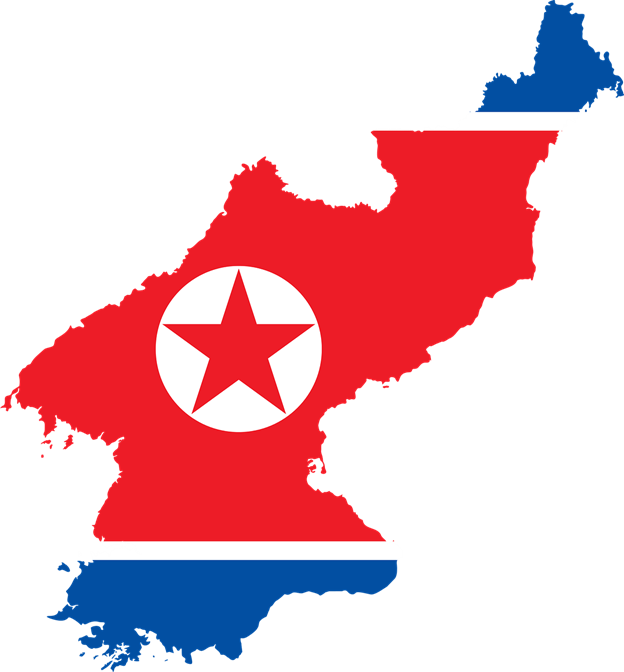The Congressional Research Service has released a major new report on North Koreas’ nuclear weapons and missile programs. We present that report for you in two parts.
Overview
North Korea continues to advance its nuclear weapons and missile programs despite UN Security Council sanctions and high-level diplomatic efforts. The country’s ballistic missile testing, military parades, and policy statements suggest that North Korea is continuing to build a nuclear warfighting capability designed to evade regional ballistic missile defenses. Such an approach likely reinforces a deterrence and coercive diplomacy strategy—lending more credibility as it demonstrates capability—but it also raises questions about crisis stability and escalation control. Congress may wish to examine U.S. policy toward North Korea.
U.S. policy as well as UN resolutions call on North Korea to abandon its nuclear weapons and missile programs. In recent years, North Korean leader Kim Jong-un has repeatedly rejected “denuclearization” talks. According to the U.S. intelligence community’s 2025 annual threat assessment (ATA), Kim Jong-un views nuclear weapons as a “guarantor of regime security.”
In response, the United States and South Korea have conducted joint military drills and exercises, and established bilateral consultative mechanisms focused on strengthening extended deterrence such as the Nuclear Consultative Group to “discuss nuclear and strategic planning, and manage the threat the DPRK poses to the global nonproliferation regime.” The Biden Administration’s 2022 Nuclear Posture Review said, “Any nuclear attack by North Korea against the United States or its Allies and partners is unacceptable and will result in the end of that regime.” It maintains that U.S. nuclear weapons will continue to play a role in deterring “rapid strategic attacks” by North Korea in East Asia.
Nuclear Doctrine and Plans
Kim Jong Un said at the 2016 Workers’ Party Congress that “nuclear weapons of the DPRK can be used only by a final order of the Supreme Commander of the Korean People’s Army [Kim Jong Un] to repel invasion or attack from a hostile nuclear weapons state and make retaliatory strikes.”
At the 8th North Korean Workers Party Congress in January 2021, Kim announced a Five-Year Defense Plan that said the country would field a new nuclear-capable submarine, develop its tactical nuclear weapons, deploy multiple warheads on a single missile, and improve its ICBMs’ accuracy, among other goals. The plan includes development of an ICBM with a range of 15,000 km for “preemptive and retaliatory nuclear strike,” and ground based and sea-based solid-fueled ICBMs. Some analysts predict an increase in missile testing this year in order to meet these goals by 2026.
The Korea People’s Assembly adopted a new law in September 2022 that reportedly expands the conditions
under which North Korea would use nuclear weapons to include possible first use in situations that threaten the regime’s survival. In September 2023, Kim promised to boost nuclear weapons production “exponentially” and diversify nuclear strike options.
Nuclear Testing
North Korea has tested a nuclear explosive device six times since 2006. Each test produced underground blasts progressively higher in magnitude and estimated yield. North Korea conducted its most recent test on September 3, 2017. A North Korean press release stated it had tested a hydrogen bomb (or two-stage thermonuclear warhead) that it was perfecting for delivery on an intercontinental ballistic missile. In April 2018, North Korea announced that it had achieved its goals, would no longer conduct nuclear tests, and would close down its Punggye-ri nuclear test site. It dynamited the entrances to two test tunnels in May 2018. International Atomic Energy Agency (IAEA) reports say North Korea began restoring test tunnels in March 2022. A recent U.S. Department of Defense report said that “North Korea has restored its nuclear test site and is now postured to conduct a seventh nuclear test at a time of its choosing.”
Nuclear Material Production
North Korea reportedly continues to produce fissile material (plutonium and highly enriched uranium) for weapons. Fissile material production in large part determines the number and type of nuclear warheads a country is able to build.
North Korea restarted its plutonium production facilities after it withdrew from a nuclear agreement in 2009, and is also operating centrifuge uranium enrichment plants at the Yongbyon nuclear complex and possibly at Kangson. In March 2025, the IAEA reported construction and operations at the Yongbyon uranium centrifuge enrichment plant, “undeclared enrichment facilities at both Kangson and Yongbyon,” and activities at the Radiochemical Laboratory plant and Experimental Light Water 5MW(e) Reactor site. Spent fuel from that reactor is reprocessed at the Radiochemical Laboratory to extract plutonium for weapons. The IAEA also reported ongoing uranium mining, milling, and concentration activities at Pyongsan.
The report concludes tomorrow
Illustration: Pixabay
